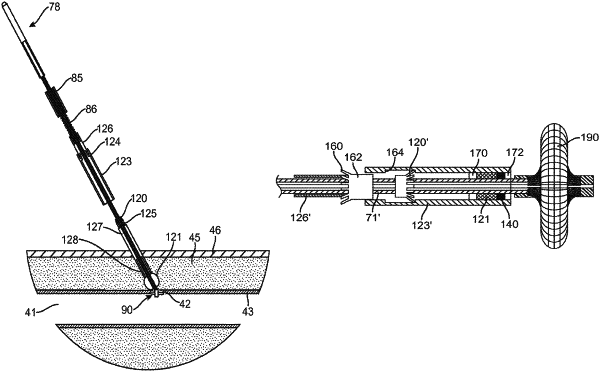| CPC A61B 17/0057 (2013.01) [A61B 90/39 (2016.02); A61B 2017/00004 (2013.01); A61B 2017/00623 (2013.01); A61B 2017/00654 (2013.01); A61B 2017/00893 (2013.01); A61B 2017/00898 (2013.01); A61B 2017/22067 (2013.01); A61B 2090/3966 (2016.02)] | 12 Claims |

|
12. An apparatus for sealing a blood vessel penetration disposed at the end of a tissue tract, the apparatus comprising:
a shaft having a proximal end and a distal end;
a radially expandable occlusion element at a distal end of the shaft;
a hemostatic implant disposed over and in contact with an exterior surface at the distal end of the shaft; and
a retractable sleeve constraining the hemostatic implant on the shaft to maintain the hemostatic implant in a position between the retractable sleeve and the exterior surface at the distal end of the shaft, wherein the hemostatic implant is configured to remain stationary on the shaft while the retractable sleeve is being retracted;
a latch disposed on the shaft and configured to hold the retractable sleeve in place while the apparatus is advanced through the tissue tract; and
a key slidably disposed over the shaft and configured to shift the latch between a locking configuration where the retractable sleeve is immobilized and an open configuration allowing the retractable sleeve to be proximally retracted.
|